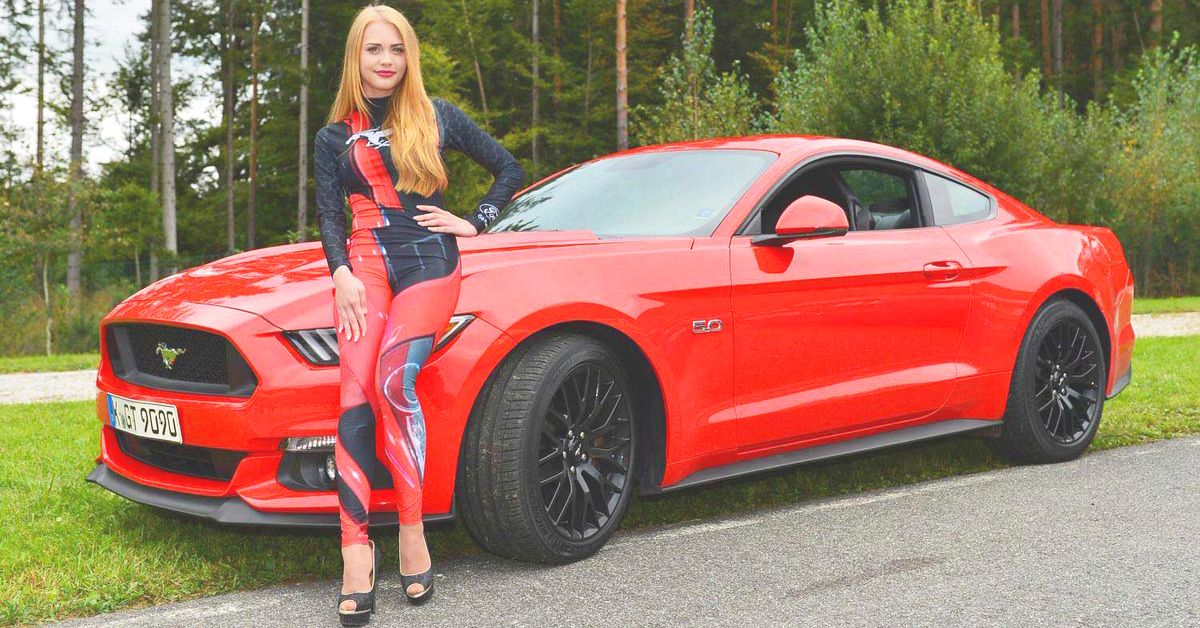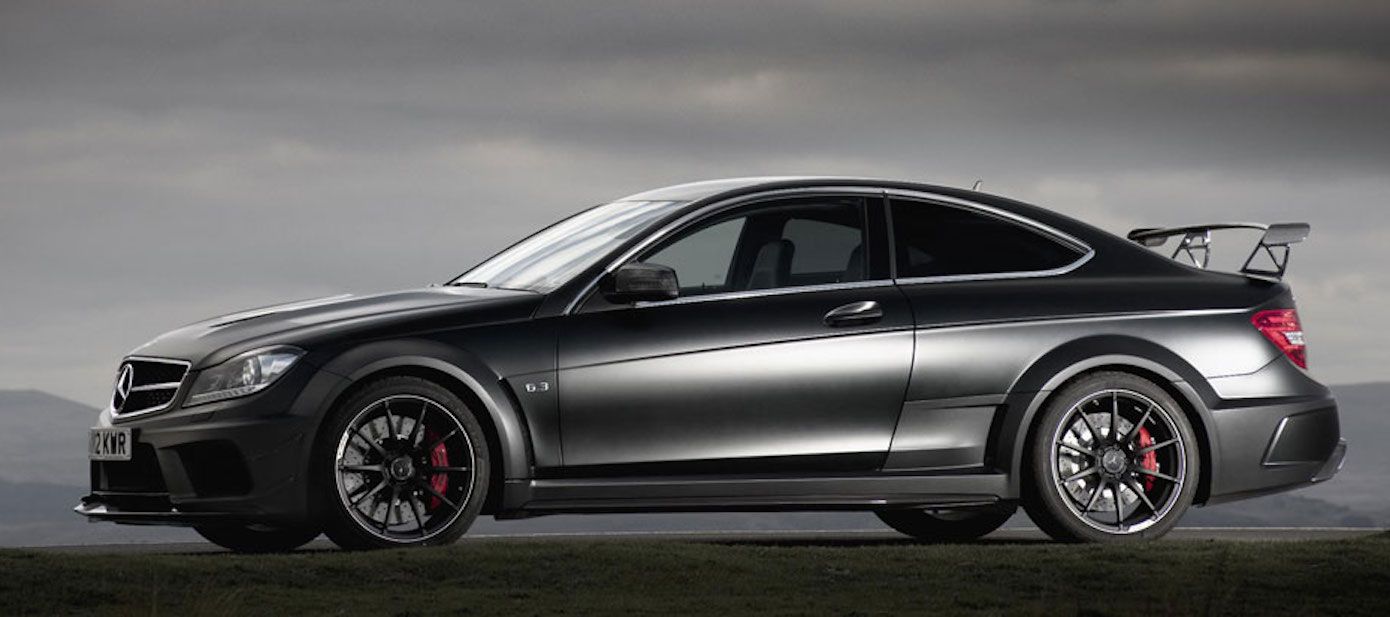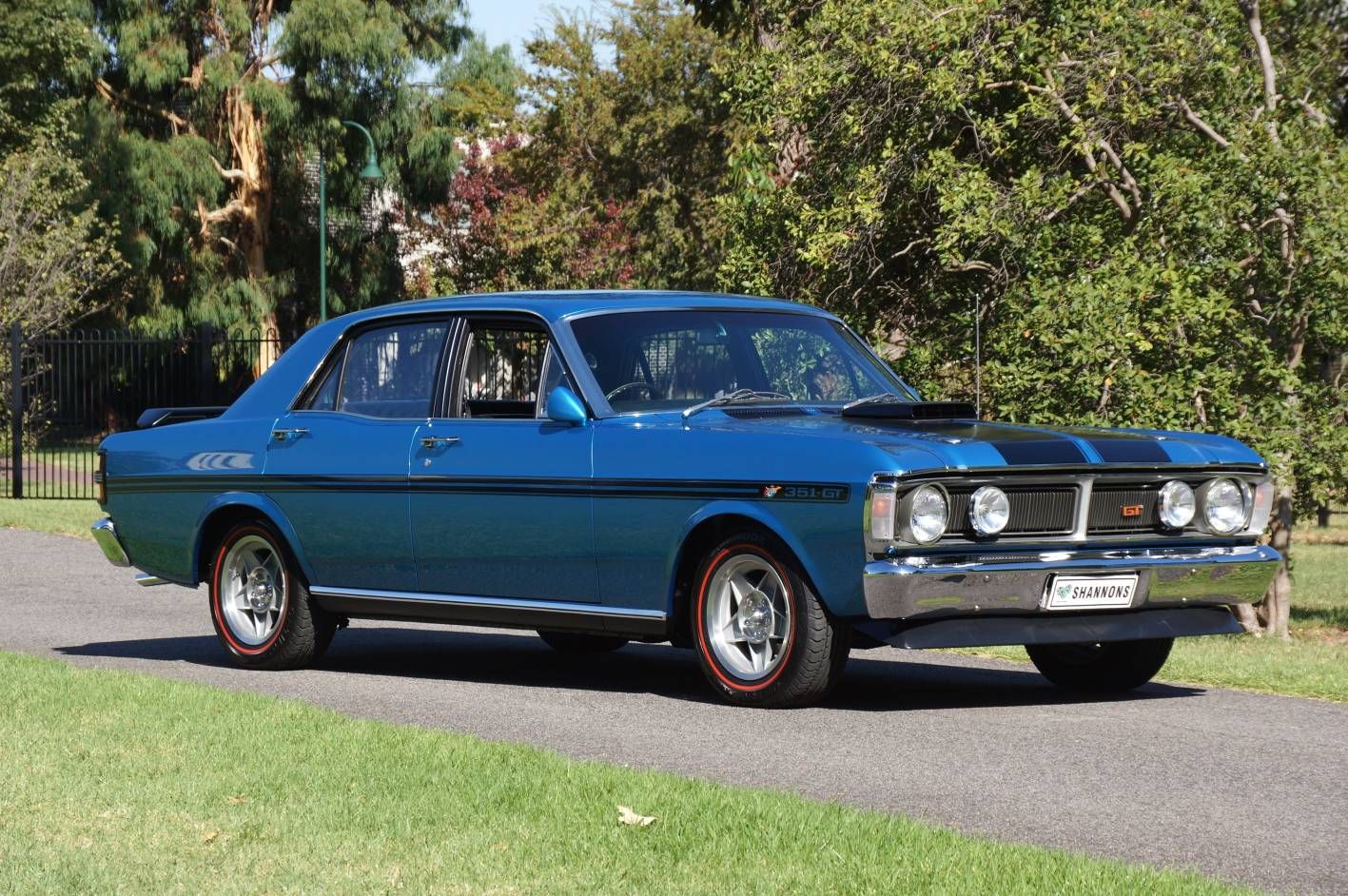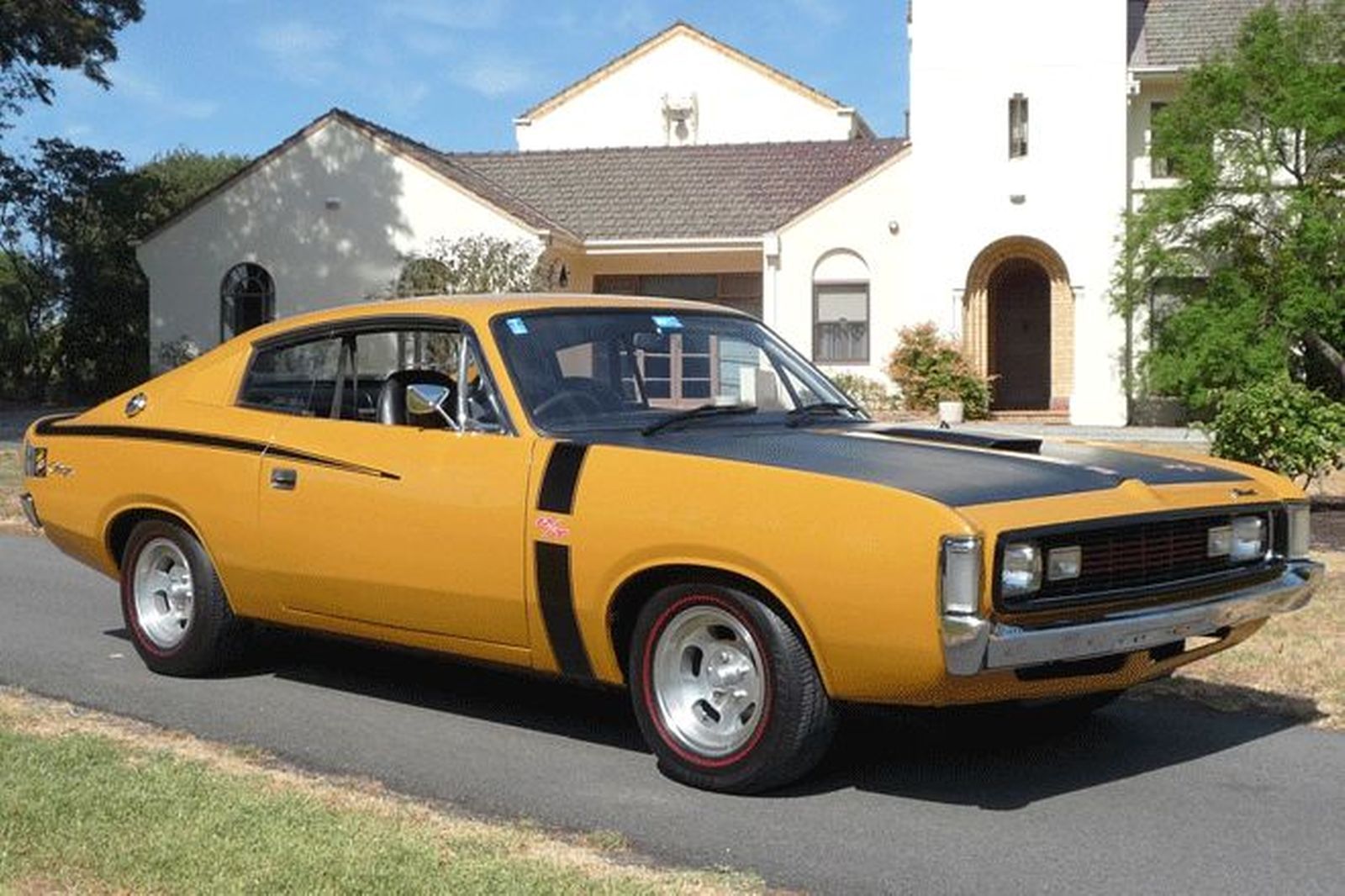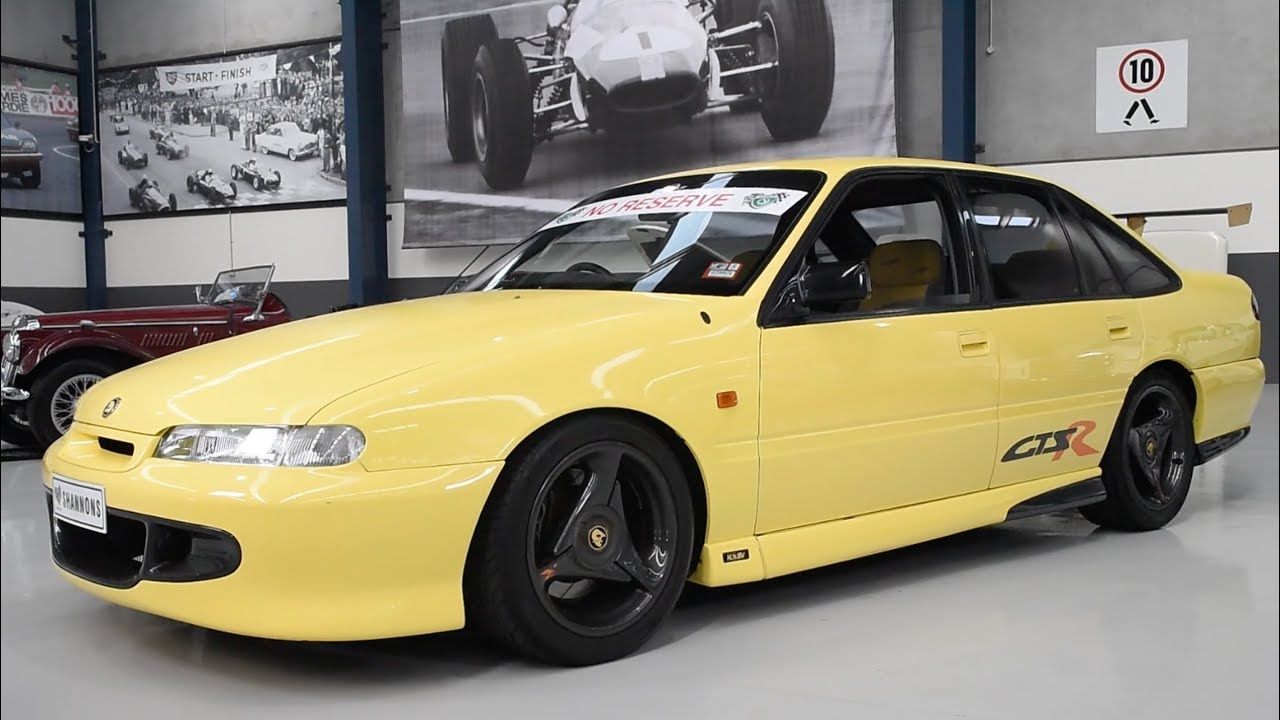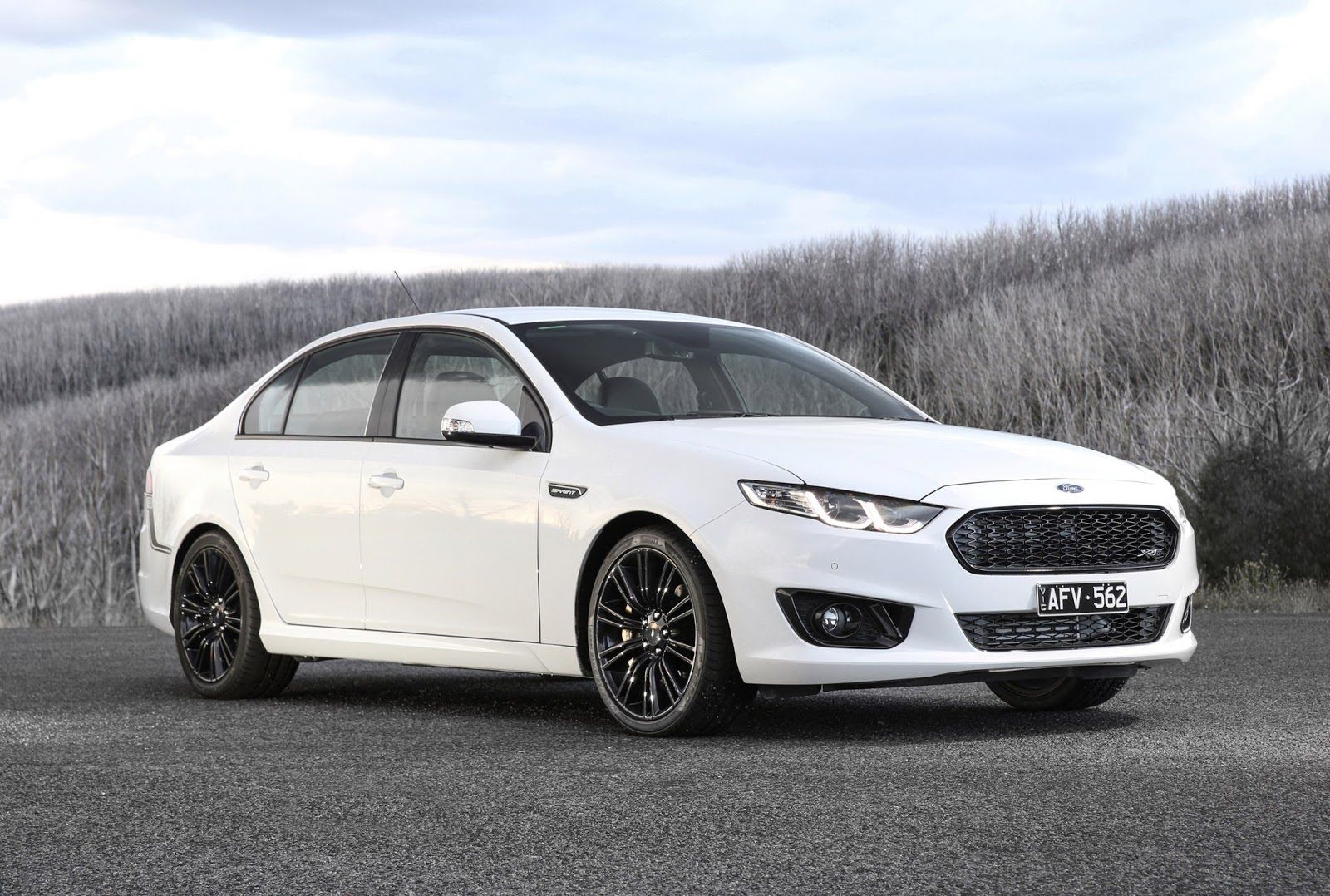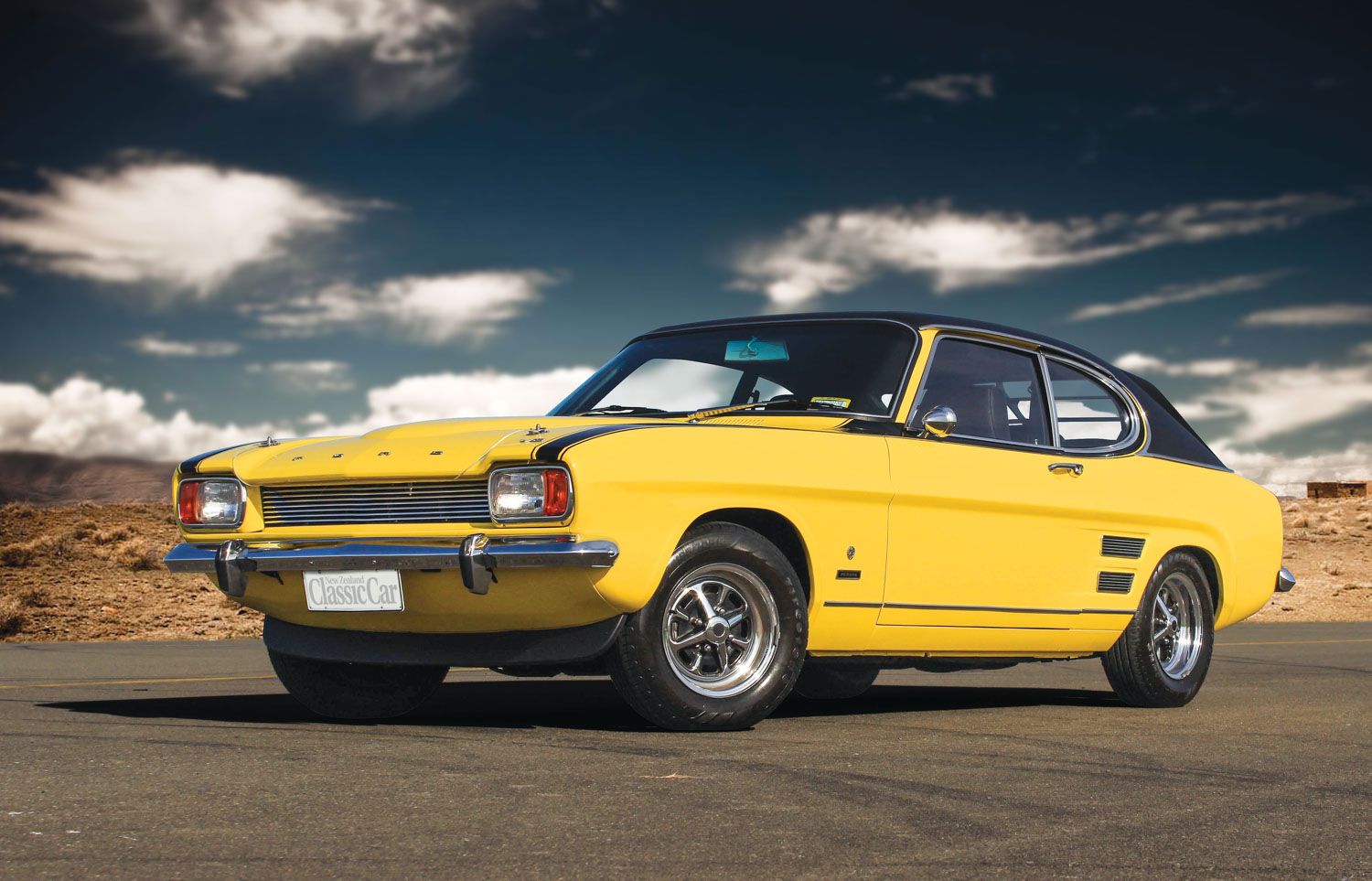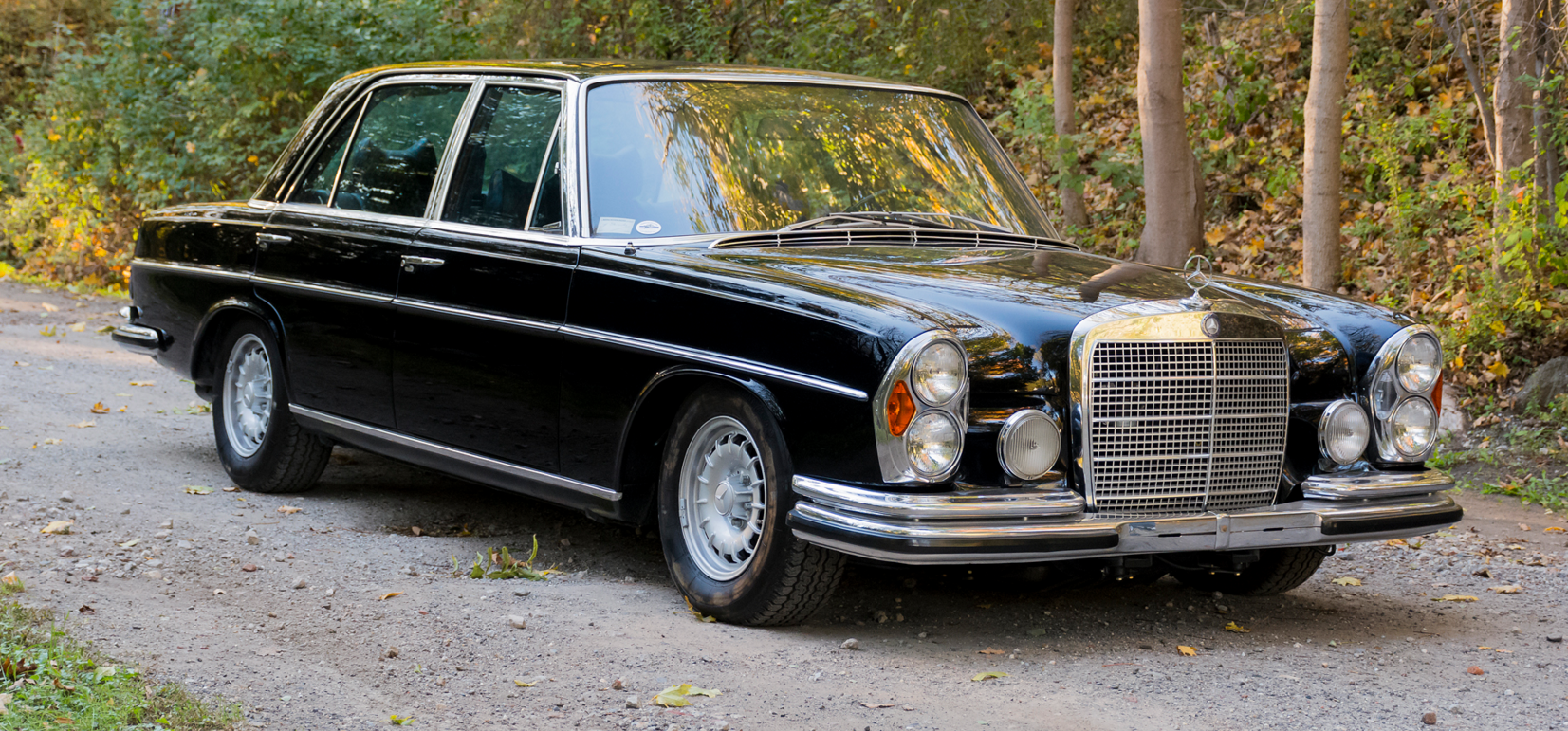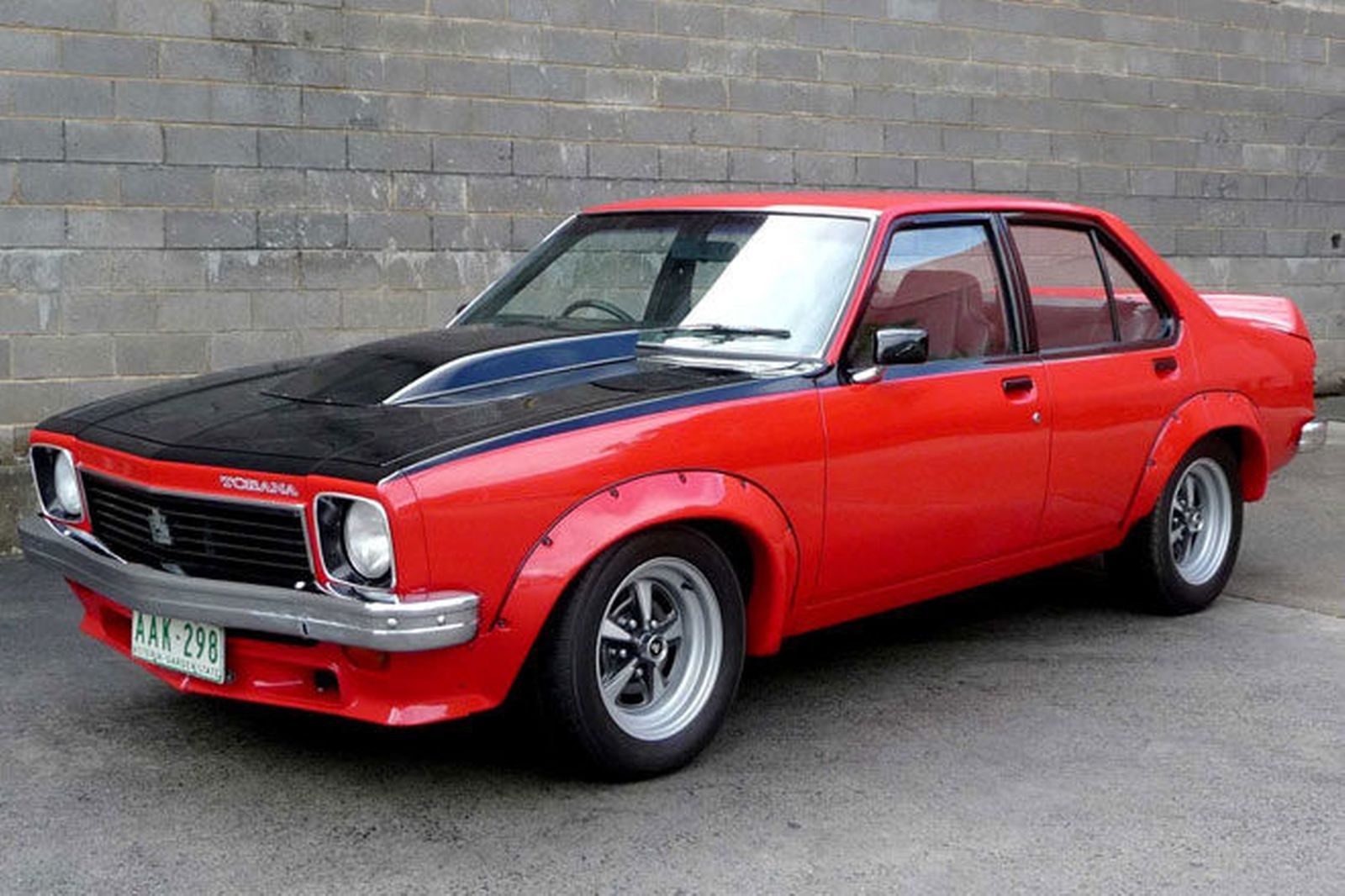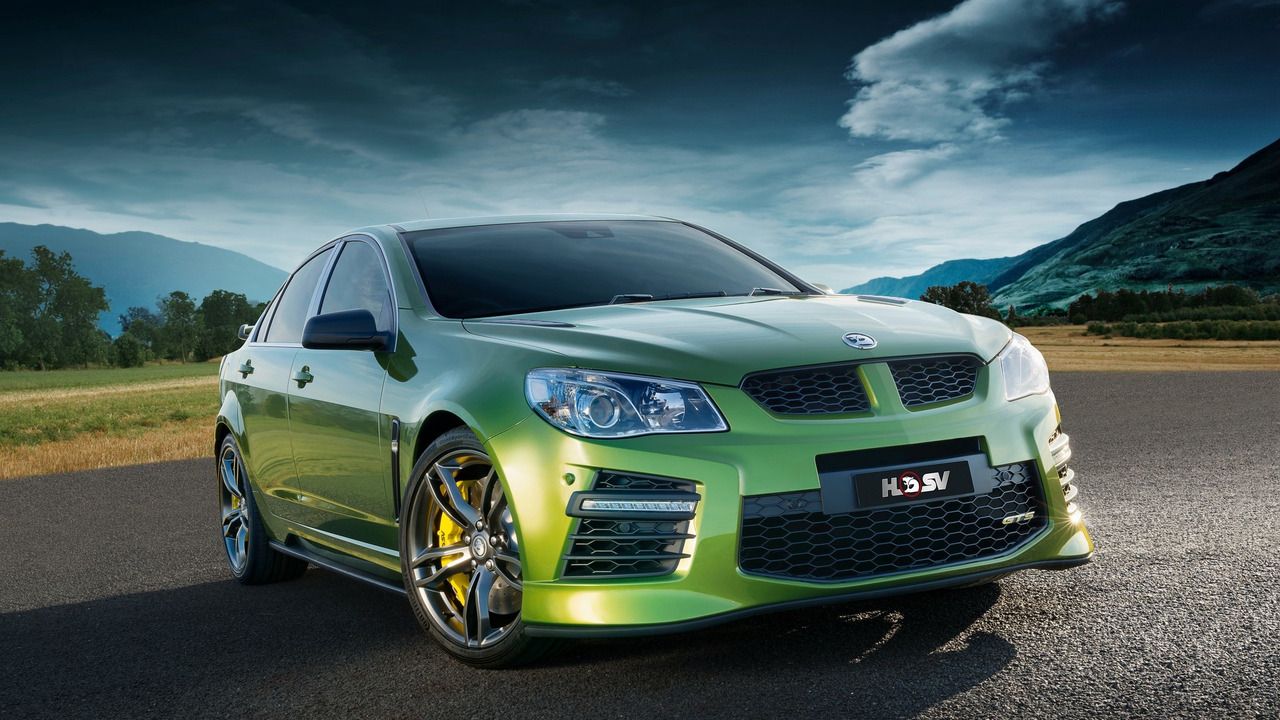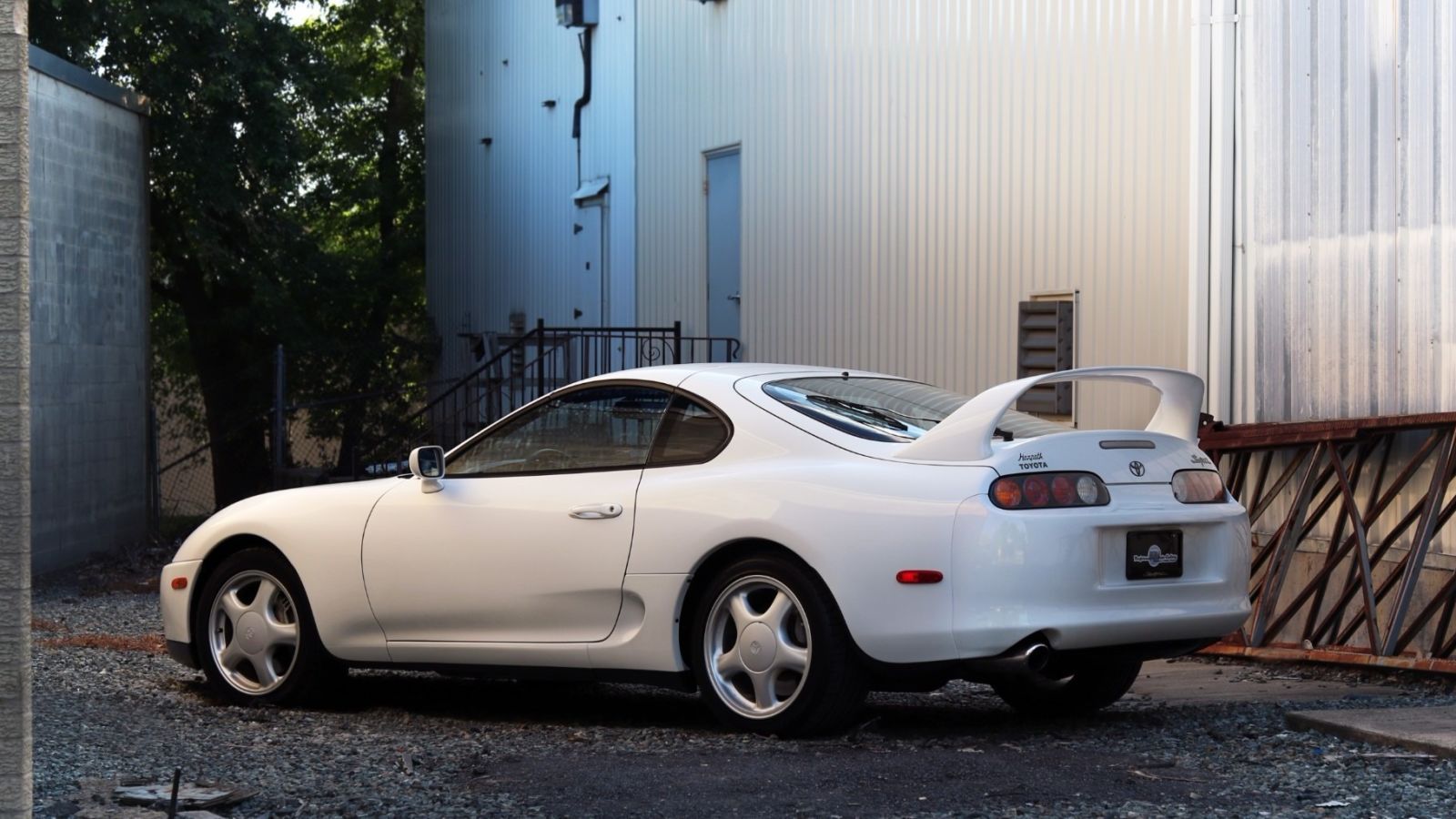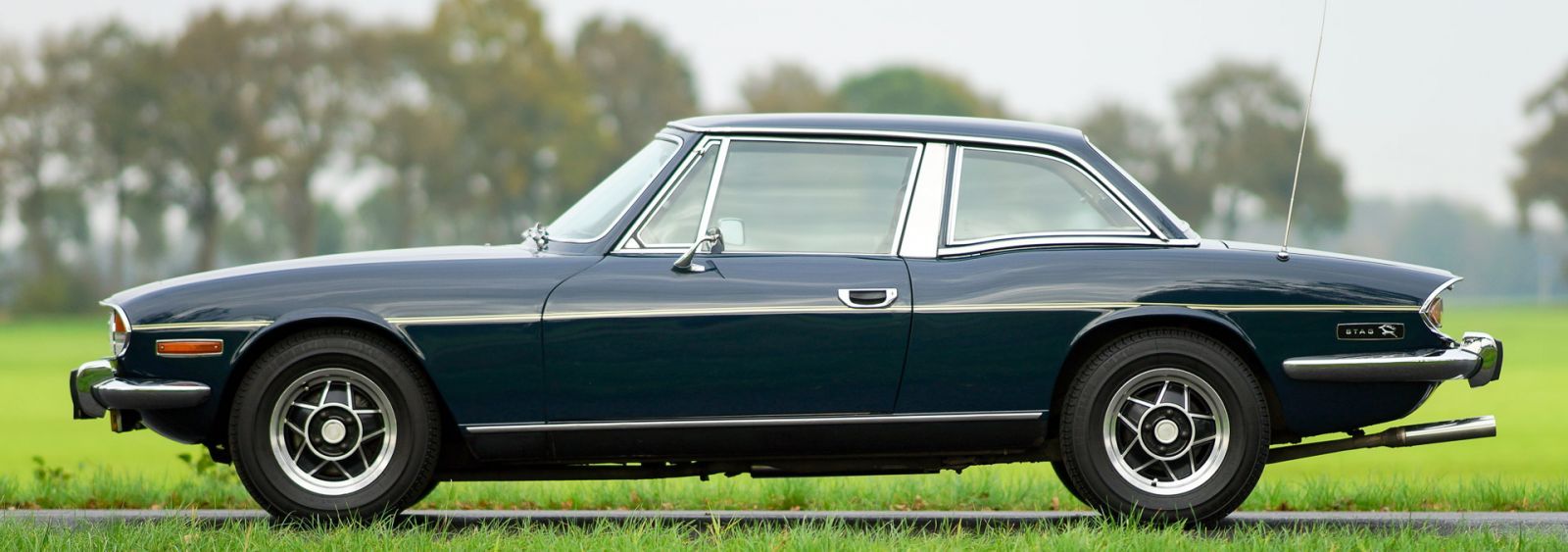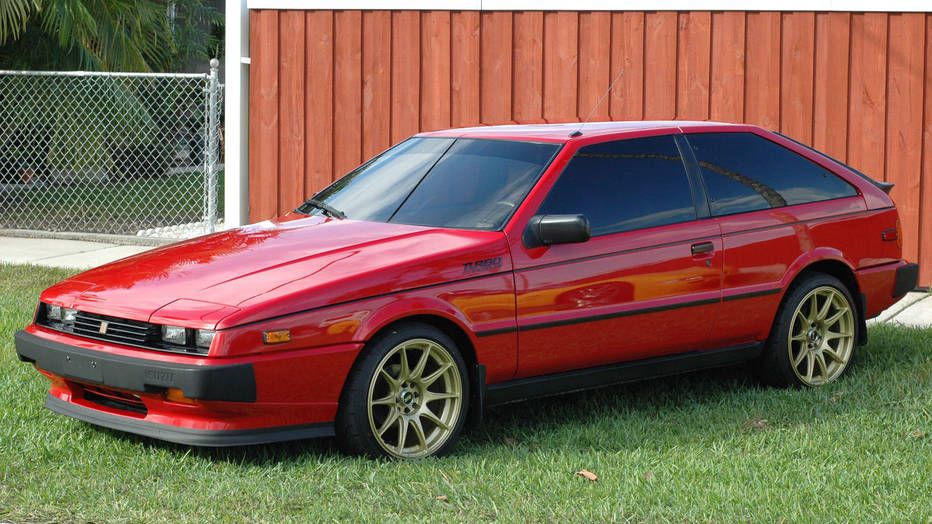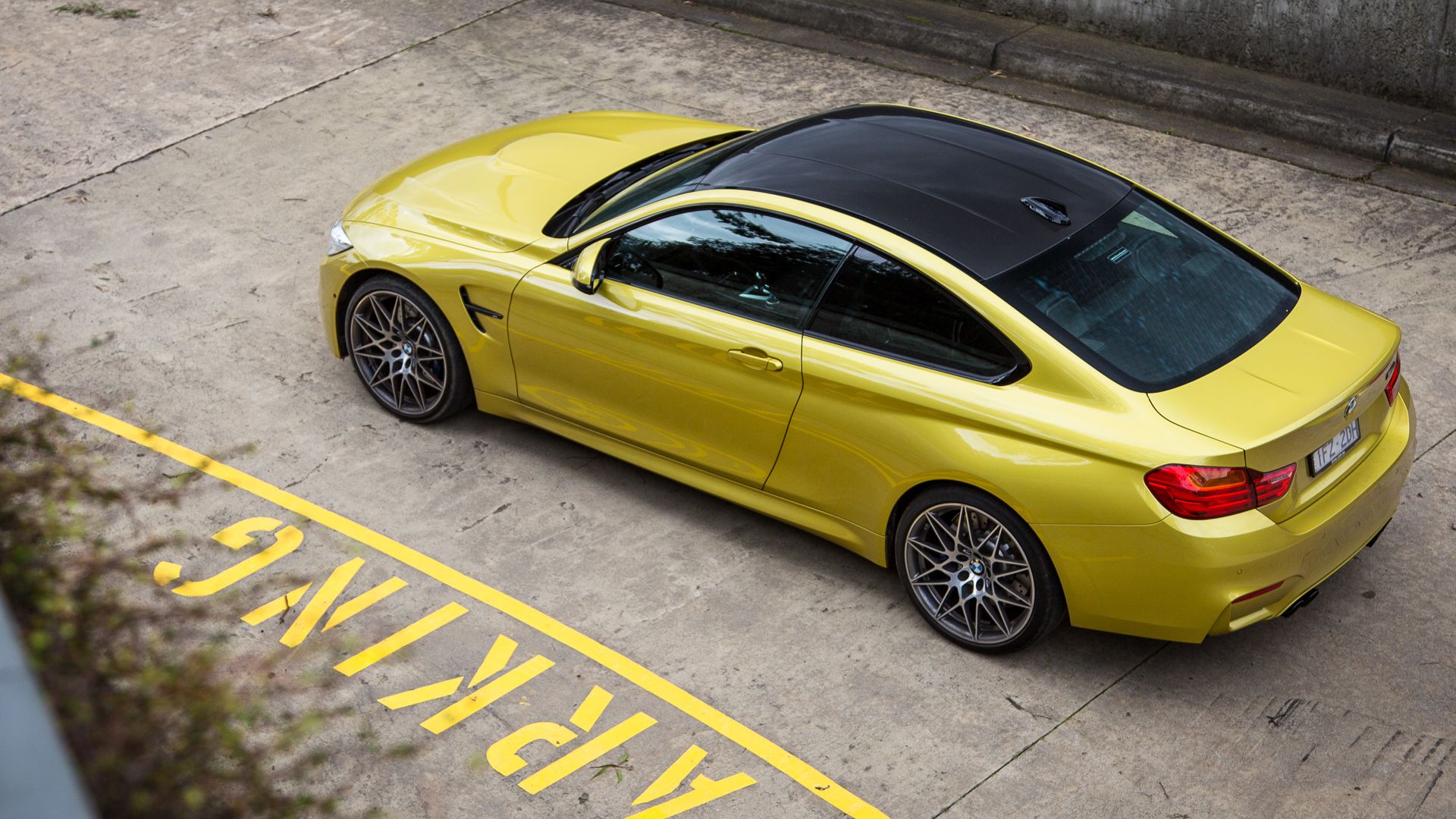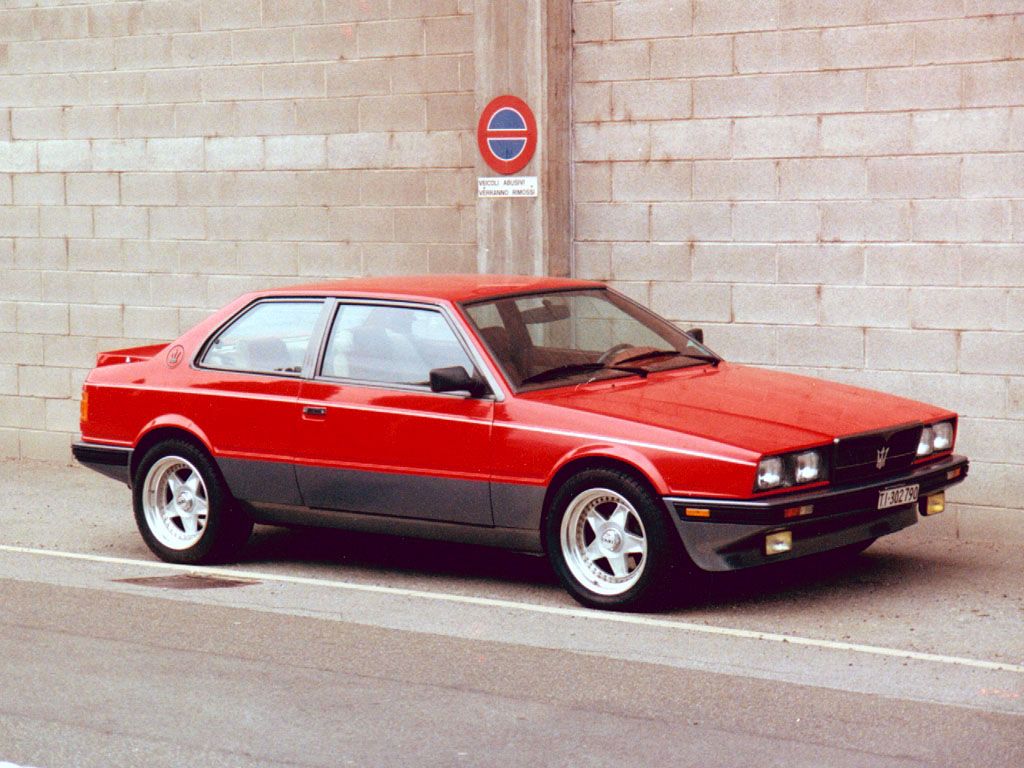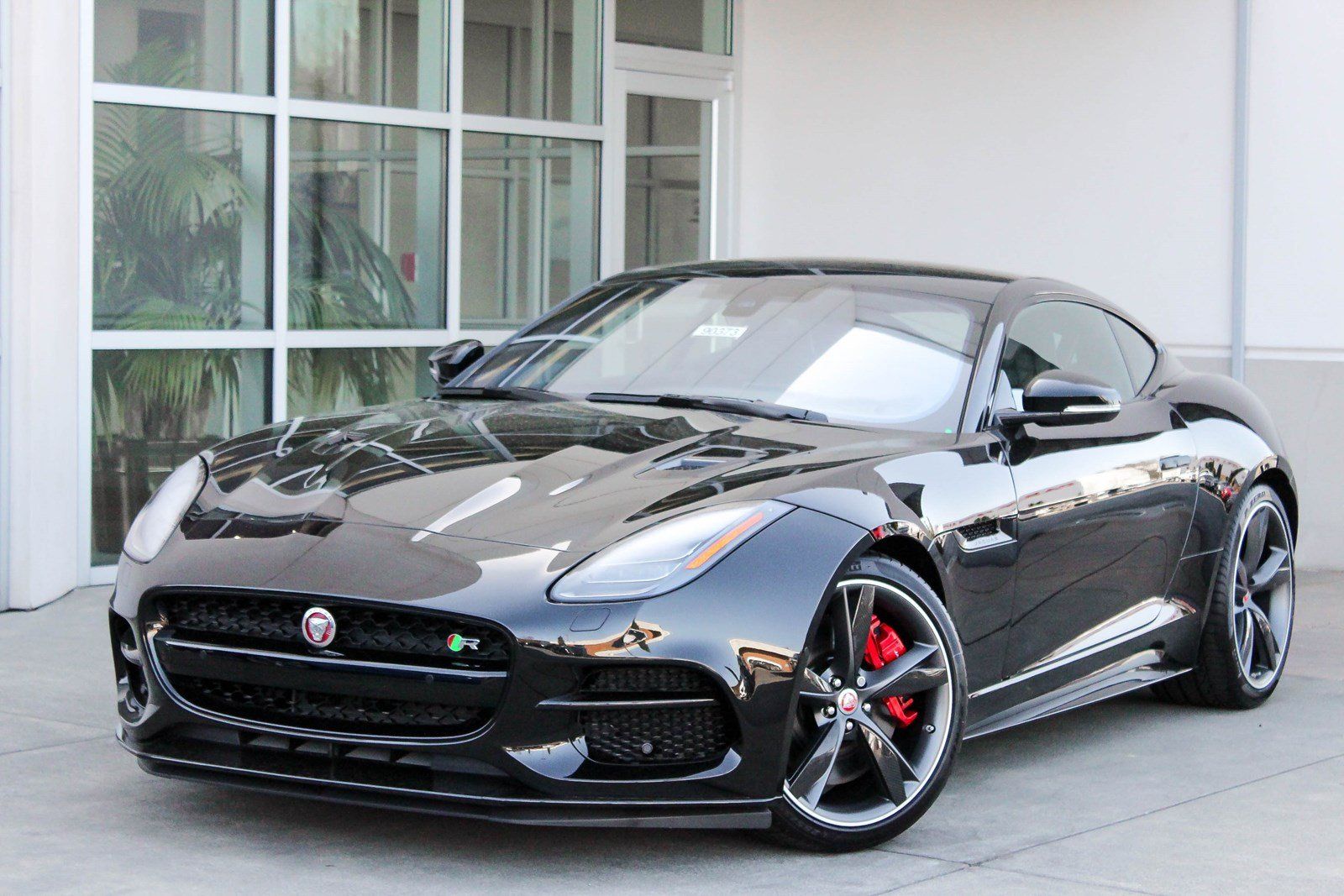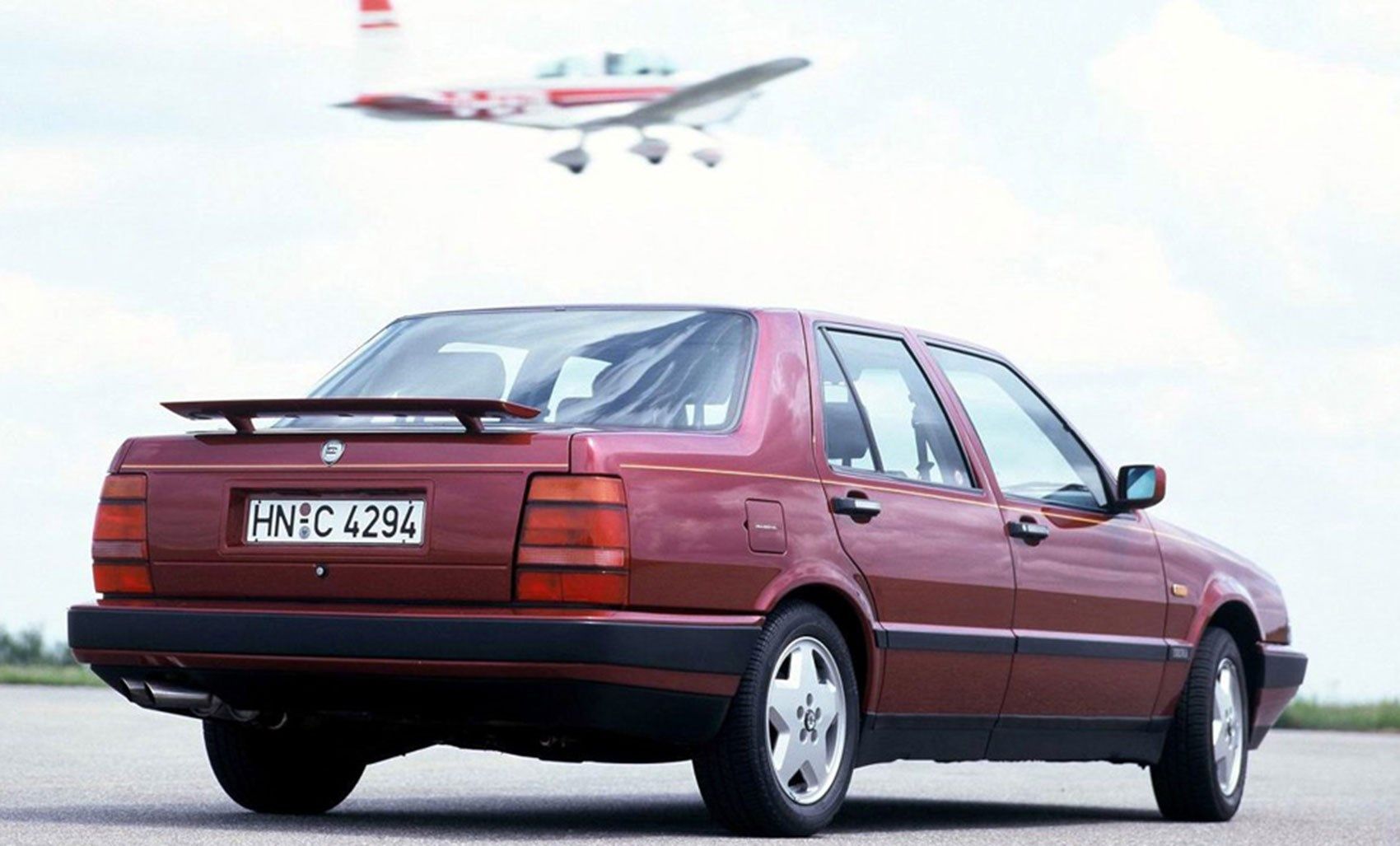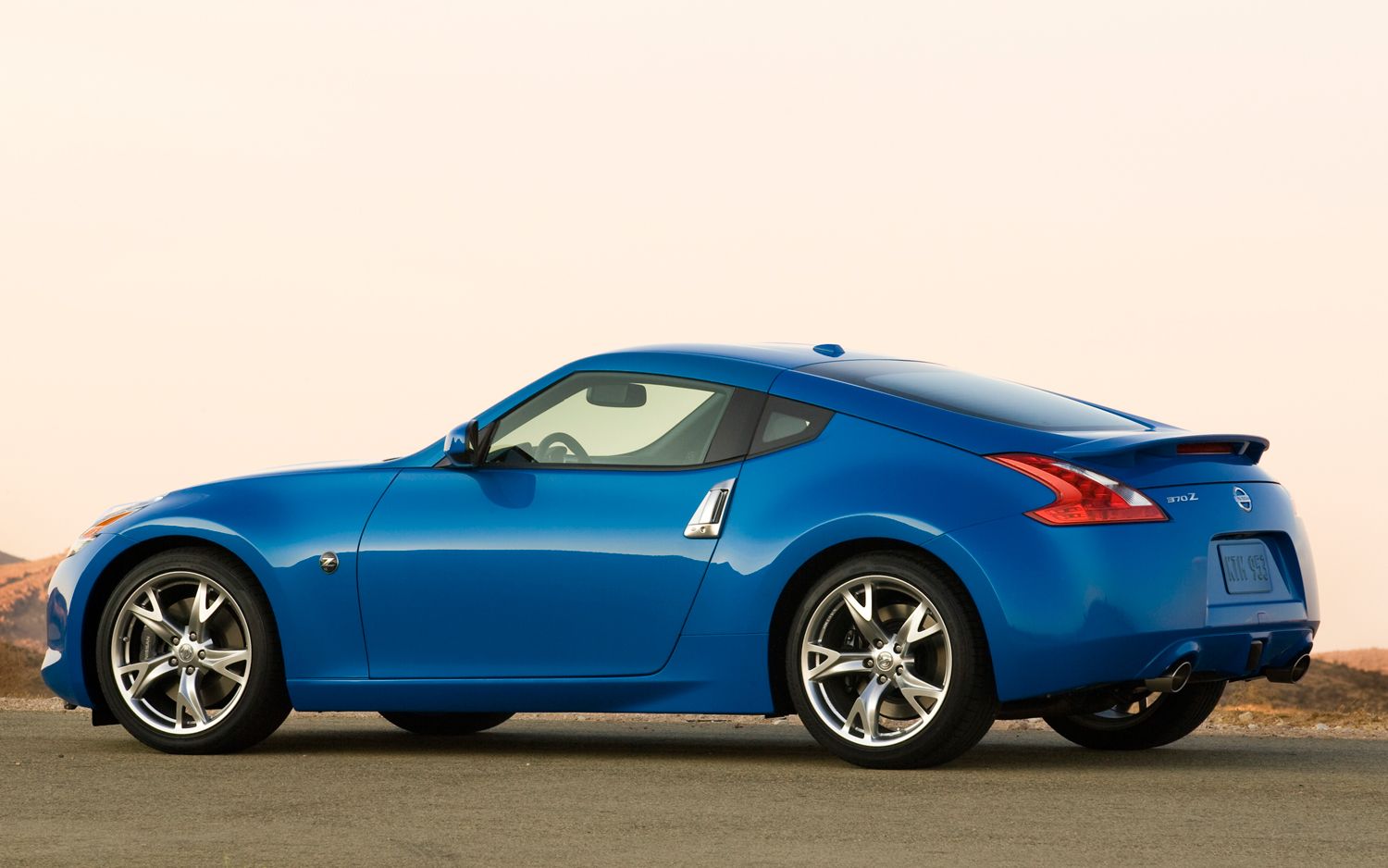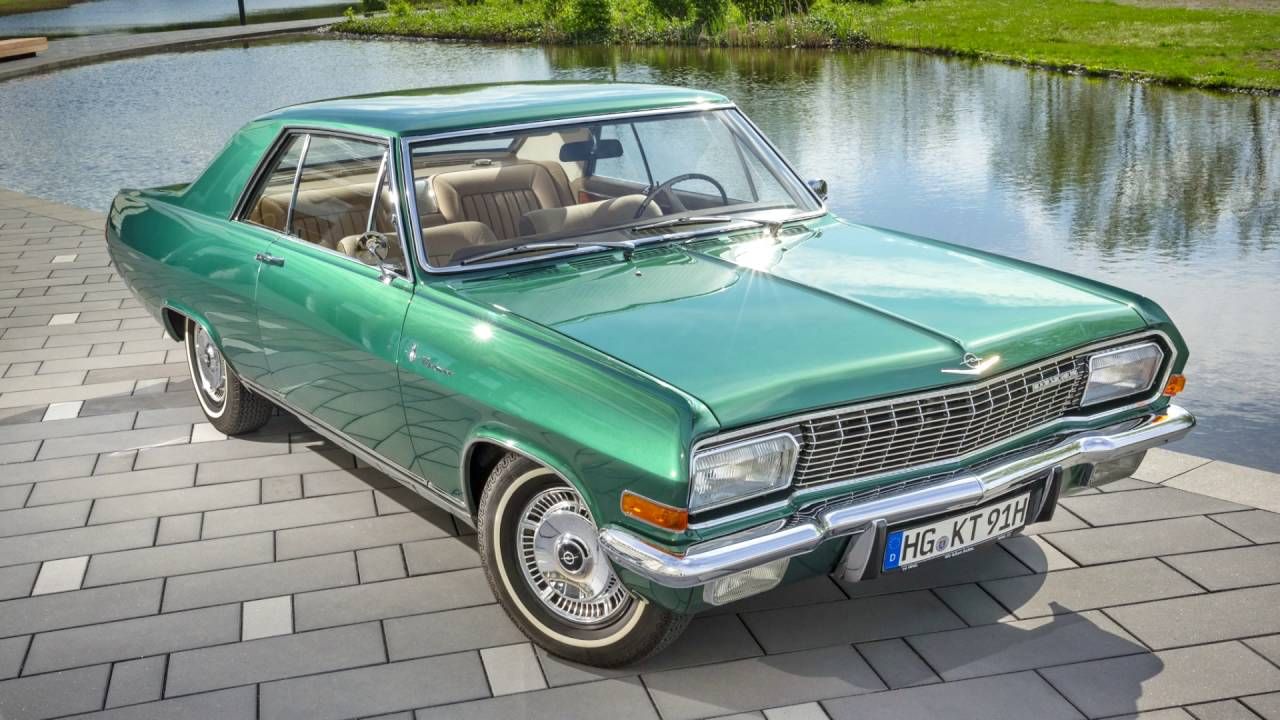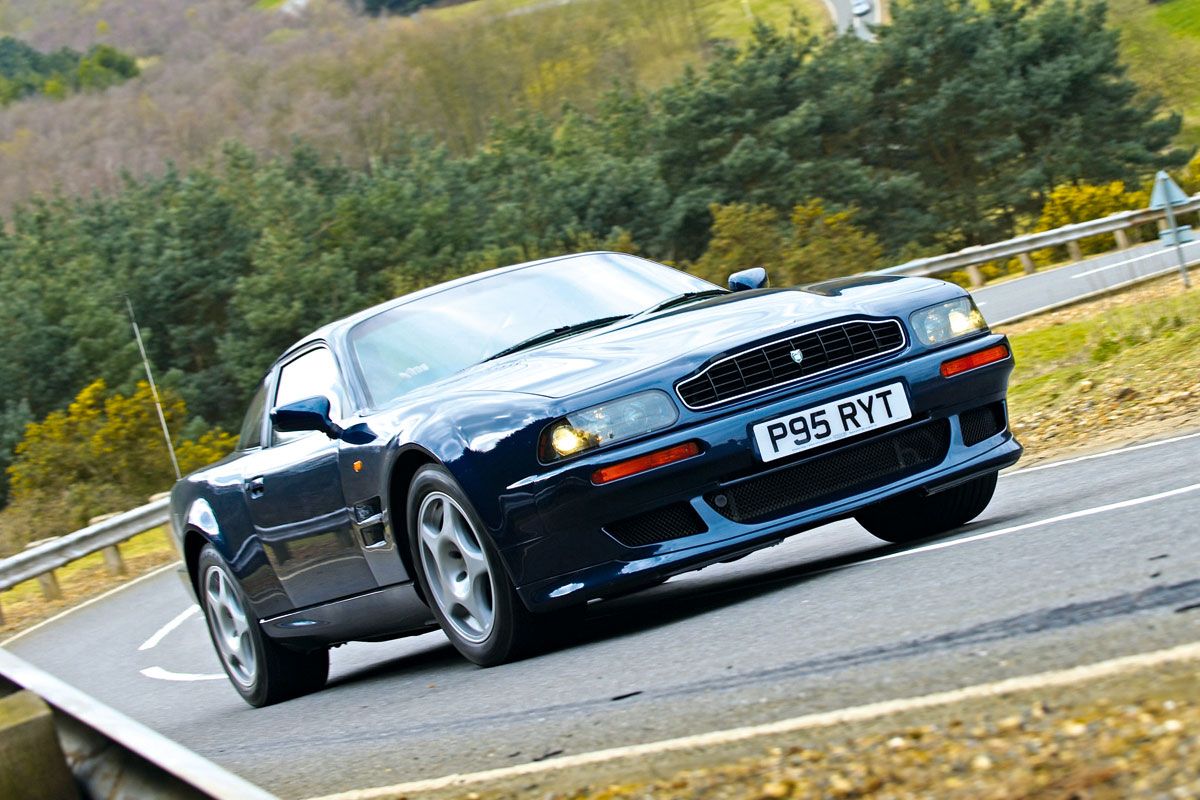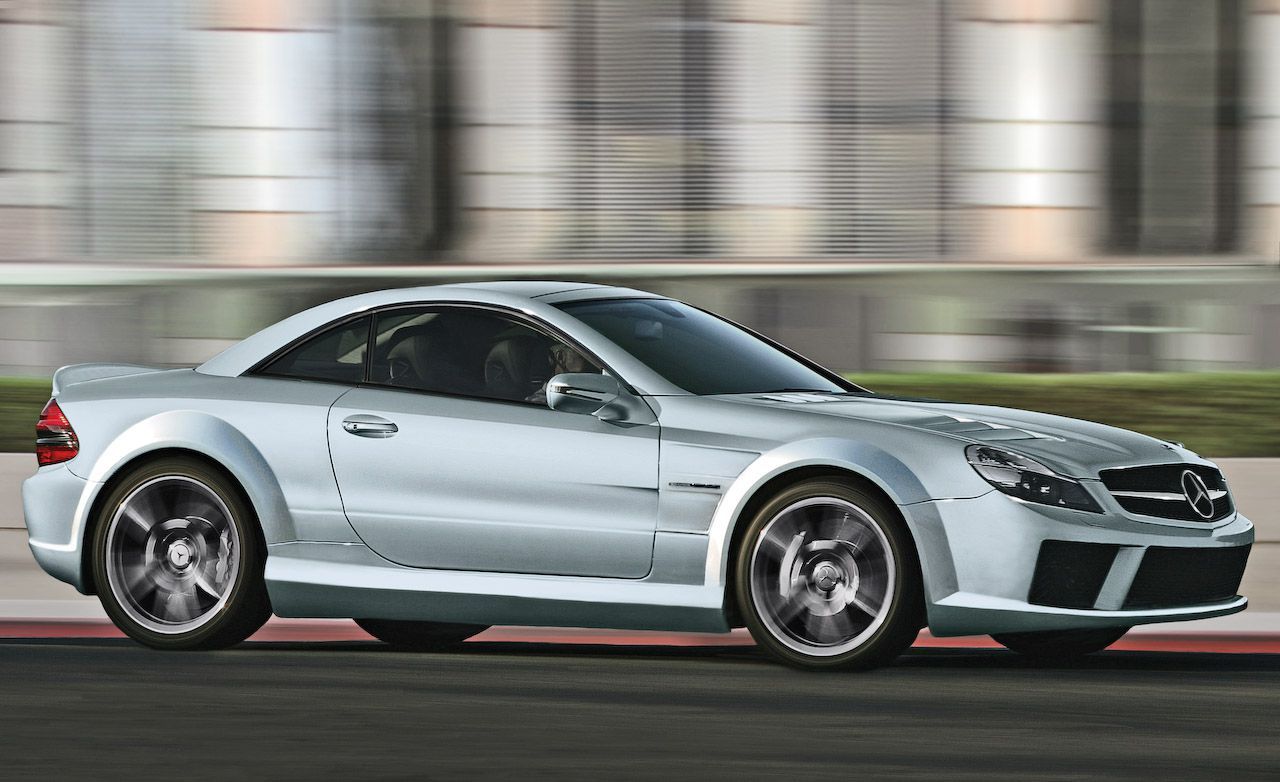Despite being the home of the Camaro, Mustang, and Challenger, America doesn’t hold a patent on the idea of a muscle car. That probably because it’s a pretty simple recipe: take a midsize or compact commuter and plop your most potent motor into the engine bay. John DeLorean and the Pontiac GTO may have popularised the idea, but Asia and Europe have had a fair shake and building overpowered monsters that can shred tires with America’s finest. While the platonic ideal of the category is a coupe with a honking great V8 sending power to the rear wheels, there are plenty of other vehicles out their that carry the muscle car spirit without adhering to that layout: think of all the turbocharged FWD sport compact lunatics that Japan has released over the years.
Ask any chef however, and they’ll say that no matter how simple the recipe, there’s always a way to mess it up. Sure, automakers are massive conglomerations that spend millions of dollars in research and development in order to make their offerings as tasty as possible, and for the most part, performance models tend to be pretty good, what with all the extra engineering attention being foisted upon them. Ask yourself this though: you think Gordon Ramsay has never burnt his toast before?
20 Mercedes-Benz C63 AMG Black Series
Over the years, the philosophy behind the muscle car has changed in order to keep up with consumer demands. While the muscle cars of the 1960s were pretty much built to blast through the quarter mile as fast as possible, the following years and added competition from other countries have made buyers expect a certain degree of refinement and handling sophistication. That said, neither one of these elements should overshadow the all-important engine, as to not upset the imperfect balance that defines the breed: too much emphasis on luxury and handling prowess would make for a premium sports car. That perfect imperfection is what the Mercedes-Benz C63 AMG Black Series (whew) has in spades.
Sure, it had some track cred, thanks to its track-ready splitter and wing combination, not to mention the chunky fender flares, Eibach springs and adjustable K&W dampers, sticky Dunlop tires and kidney-crushing Recaro seats. But its still the engine that was the undisputed star of the show, a reworked version of the 6.2 liters M156 V8 in the "standard" C63 that features forged pistons, rods and crankshaft. That brings total output to 510 HP and 457 lb-ft of torque, enough to launch the big Benz to 60 MPH in 3.9 seconds.
19 Ford Falcon GTHO Phase III
In recent years, several American muscle cars have proven their worth not only on the drag strip but also around a road course. That shouldn't come as a surprise. Despite the stereotypical image of the breed being an overpowered, overweight brutes with all the grip of a wet sponge on marble, several famous nameplates have made their name known on the country's most vicious circuits: the Z/28, Boss 302 et al. were made famous by Watkins Glen and Road America.
Australia is sort of a bizarro-land version of this: not only does the continent have its own distinct muscle car history, but also its own world-renowned tracks, with the most famous of those being the treacherously twisty Mount Panorama Circuit in Bathurst, New South Wales.
This automotive Thunderdome is home to the Bathurst 1000, a 621-mile endurance race that pushes cars and drivers to their limits. Like the Trans-Am-winning Mustang 302, the Falcon GTHO Phase III was a road-homologated version of the car that came first at the 1971 event. It didn’t leave anything on the table to its race-bred sibling: a 351ci Ford "Windsor" put out somewhere in the region of 350-380 HP, while a 9” Detroit locker rear differential, 4-speed gearbox and beefed up suspension components helped keep things under control. Mint-condition examples today are some of the most valuable classic cars to come out of Australia, as prices at auctions regularly crest $600,000.
18 Valiant Charger R/T
Valiant was Chrysler’s Australian division and offered products that were unique to its market. Case in point, the Valiant Charger. Despite sharing a name with Dominic Toretto’s wheels of choice, the two cars didn’t really share anything in common. The Valiant utilized Chrysler’s smaller A-body platform, which saw use here as the Dodge Dart and Plymouth Duster. But hey, enough with the tangential topics. Not only did the Valiant have a smaller chassis, it utilized a smaller engine as well. Don't let that fool you, however: the Charger R/T was every bit as it's American relatives.
In the range-topping E49 specification, a 4.3-liter straight-six lurked under the hood, complete with triple Weber carburetors and hemispherical combustion chambers (which actually means that it could be considered a "Hemi"). Combined with race-ready internals (such as hotter camshafts and reinforced connecting rods and crankshaft), the Charger R/T made 302 HP. Not only was one of the most powerful six-cylinder powered cars to ever enter production at the time, it also held the ¼ mile record for 27 years, ripping across the line in just 14.4 seconds.
17 Holden Commodore GTS-R
On the surface, the Commodore GTS-R isn’t much of a looker. Certainly, there’s little to indicate its sheer performance potential. Taxi cab-yellow paint, gaudy stickers, and a set of unseemly tri-spoke alloys give a certain Fast and Furious: High School Sophomore Edition vibe. However, under the tacky wrapper is a race-honed machine for muscle diehards from the Land Down Under. Only 85 GTS-Rs were built, and when new, they went for a quite frankly ridiculous $85,000 (in inflation-adjusted USD).
That will only seem more ridiculous if you judge it purely by what’s under the hood. While the numbers aren’t abysmal, with its 5.7-liter Aussie-built V8 cranking out 288 HP and 350 lb-ft of torque, they certainly don’t merit that asking price alone. Heck, if you wanted to see the price go even higher, you could opt for a “blueprinted” engine package that improved both those performance figures by about 10 percent. No, the GTS-R was all about the curves, as it came with a laundry list of high-dollar parts meant to improve handling, including 330mm front brakes and Hydratrak limited-slip differential.
16 Ford Falcon FG-X XR6 Sprint
As confirmed by the Valiant Charger R/T, Australia has a fascination with high-output straight-six muscle cars. But while Chrysler practically invented the niche, Ford turned it into a source of national engineering pride. Their contribution to the world was a family of inline-sixes dubbed 'Barra'. It was first introduced in 2002, and in its first performance application, it made a healthy 240 HP in the BA-chassis XR6 Turbo. As both the Falcon aged and got bigger, so too did the Barra's output.
Unfortunately, we only found its true performance potential at the end of not only its own life but also the Falcon's.
The 2016 FG-X XR6 Sprint, Ford’s final hurrah for the Aussie-built sedan, marked the end of the country's obsession with manufacturer-backed arms races. At least it was a fitting send-off, as the XR6 Sprint cranked out 436 HP and 425 lb-ft of torque, with an overboost function that jumped those figures up to 496 HP and 479 lb-ft in bursts of 10 seconds. All that means that the this very special Falcon can easily claim to be the fastest six-cylinder car to ever come out of Australia. Indeed, it's not like America has a modern equivalent, except for maybe the Cadillac ATS-V (which I wouldn't consider to be a sports sedan, not a muscle car).
15 Ford Capri Perana
What happens when you leave a former Formula 1 mechanic from South Africa in a garage with a 5.0-liter Mustang motor and a featherweight Ford Capri? Well, here’s your answer. In order to fully appreciate the flavor of this very spicy dish, you'll need a bit of background info on the main ingredients.
Introduced back in 1968, the Capri was a sporty coupe meant for younger, hipper European buyers: a continental Mustang, if you will. Meanwhile, Basil Green used to work for the Cooper race team in the sixties, and after he retired, he went on to open his own aftermarket shop in Johannesburg. He quickly made a name for himself as the go-to guy for big-power Ford builds, stuffing ‘Essex’ V6s into Ford Cortinas. The Capri Perana was just on another level compared to those relatively humble creations. Green upgraded the car's 5.0 ‘Windsor’ V8 engine with a four-barrel Holley carburetor, solid-lifter Boss 302 camshaft and an aluminum intake manifold. Together, these goodies put out 281 HP. Thanks to its low curb weight, this allowed the Perana to get to 60 in just 6.4 seconds.
14 Mercedes 300SEL 6.3
It can be tricky to trace the exact lineage of certain categories of cars: was the first hot hatch the VW Golf GTI or the Renault 5 Gordini? You could make a compelling case for the Simca 1100TI being the oldest of the family as well. When it comes to overpowered executive sedans, however, few would argue that the Mercedes-Benz 300SEL 6.3 wasn't the grandaddy. Introduced in 1968, the 300SEL 6.3 follows the quintessential recipe for a muscle car pretty closely.
Take a quotidian upmarket sedan throw out the stock engine and replace it with the biggest, most powerful engine the company makes. In this case, that meant pulling the 6.3 liters M100 V8 engine from the 600 Grosser limousine, a hyper-luxurious sedan that chauffer business leaders and dignitaries around Germany.
That massive cast-iron lump with a mechanical Bosch fuel injection system doled out 247 HP and 369 lb-ft at a comfortably low 3,000 RPM.
Coupled to a 4-speed automatic gearbox and 4-wheel ventilated disk brakes, the performance on offer was staggering by the standards of 1968. Unlike many contemporaries, the 6.3 can still be considered quick even by modern standards. That translates to a 0-60 sprint of 6.5 seconds as verified by Auto, Motor und Sport magazine.
13 Holden LX Torana A9X
In case you haven’t noticed yet, the Bathurst 1000 has inspired many a high-performance special from Australia. It’s a bit like a regional version of the current industry’s obsession with the Nürburgring, in the sense that seemingly everybody is building cars meant to lap a course as fast as possible. The A9X was among that group Bathurst-bating lunatics and backed up the menace of its bolt-on fender flares and bulging hood with a gaggle of performance-enhancing goodies, including a lowered and stiffened suspension, a Salisbury rear differential and, of course, a honking great V8 engine.
In this case, that was the ‘L34 option’ 5.0 V8. Unlike some of the other Aussie cars on this list, Holden didn’t go to their American cousins to ask for some help: this baby was born and bred in the land down under. That L34 option package was intended to prep the motor for the ridiculously harsh Bathurst racing conditions, and horsepower fits somewhere between 240-250 HP. In any case, the A9X achieved its intended purpose bringing racing pedigree to the masses, as a Torana powered by the same engine won the Bathurst 1000 in 1975.
12 HSV GTSR W1
While I know I’ve talked a lot about Australia’s rich muscle car history, it’s mostly due to the fact that it only just came to an end. Building products that cater exclusively to a single market isn’t an economically sound strategy for carmakers anymore, so gone are the happy days of burnouts in Commodores and Falcons, not to mention any hopes of us American consumers persuading Chevrolet to keep building the SS or for Ford to give us a four-door Mustang equivalent. Before shutting down production of the Australian-built Commodore in 2017, Holden Special Vehicles (HSV), essentially an Aussie AMG, planned an absolute awesome Viking funeral.
The GTSR W1 was a 4-door monster packing a vicious 636 HP punch, courtesy of the supercharged LS9 from the previous-generation Corvette ZR1. HSV built just 300 of these beasts, each priced at the equivalent of around $130,000 USD.
It wasn’t all about straight-line dominance, however: the W1 came with track-ready Pirelli PZero Trofeo R tires, stiffened springs, and shocks designed by SupaShock, a parts supplier for the V8 Supercars racing series. Thankfully, the latter series trundles on, though without the participation of the Nissan, Mercedes-Benz, or Volvo, all foreign marques that have participated in recent years.
11 Toyota Supra JZA80
Unlike its contemporaries in the Mazda RX-7 and Honda NSX, the Toyota Supra was never renowned as a back-road scalpel. Instead, it was Japan’s idea of a sporty grand tourer, with 320 twin-turbocharged horses courtesy of its mythically overbuilt 2JZ-GTE engine. In stock form, I’m not sure if you could call it a muscle car.
However, the Supra, more than almost any other car on Earth, is defined more by modified examples than ones that left the factory. An enormous part of that aftermarket culture is focused on extracting ludicrous amounts of power from that bulletproof straight-six.
Maybe those reasons form the basis of why the Supra is one of the few nineties Japanese icons that seems more at home on the drag strip rather than Tsukuba: big power potential combined with a relatively high 3,461 lb stock curb weight. Cars shod in oil drum slicks and four-digit power figures are a regular sight at import drag meets. Heck, even in the movie franchise that shifted the Supra into mainstream pop culture had it lining up in a ¼ mile drag race.
10 Triumph Stag
The Triumph stag was one of Triumph’s last gasps as a sports car maker. On the surface, that’s pretty hard to believe. I mean, just look at it. Even for a company with a back catalog as pretty as Triumph, the Stag was a remarkable design. Unfortunately, looks were the only thing it had on its side. Of course, when you realize that Triumph’s parent company was British Leyland, maybe getting your hopes up in the first place was a pretty dumb thing to do. Power came from a Triumph-designed 3.0 liter V8 with twin Zenith-Stromberg 175 CDSE carburetors.
Being a British-designed motor from the 1970s, it was rife with weapons-grade engineering ineptitude: the water pump was plopped on top of the engine, allowing evaporated coolant to escape when things got too hot, the block and heads were made from different materials which forced owners and dealers to constantly apply corrosion-resisting anti-freeze to keep the engine from basically dissolving, and seriously fragile cylinder head gaskets. To add insult to injury, the Stag’s V8 wasn’t even that powerful with a weedy 145 HP, enough to drag it to 60 MPH in 9.3 seconds. A Dodge Charger R/T of a similar 1970 vintage could do the deed in 6.8.
9 Isuzu Piazza Turbo
Alright, I know I’m stretching the definition of a muscle car a little thin here, what with the Piazza Turbo having a turbocharged inline-four under its reverse-hinged hood, but trust me, this was a muscle car not in body, but in spirit. Isuzu isn't the first name that comes to mind when you think of sporty RWD two-doors, but the Piazza Turbo aimed to change that. It's sleek bodyshell was penned by the one and only Giorgetto Giugiaro, which explains why it looks so damn good (for those who don't know, Giugiaro has one of the best CVs in the business, some highlights being the BMW M1, Lotus Esprit, Alfa Romeo Brera, and first-generation Volkswagen Golf).
I should also mention that the Piazza Turbo fits our (admittedly poorly-defined) description of a muscle car by having a number of less potent versions on offer, all powered by naturally aspirated four-cylinders of various displacements.
Turbo models got a shot of forced induction, with total output being raised to a not-too-shabby 180 HP in non-American models. However, its platform, derived from the Chevrolet Chevette, was completely unable to cope, and handling was wayward enough that you'd be stuck going at a crawl to avoid smashing into a tree and bursting into flames.
8 BMW M4
Previous versions of BMW’s second-smallest M-tuned coupe, which carried the M3 moniker regardless of door count, were renowned for their stellar mix of chassis poise and responsive engines. The previous generation M3, with its naturally aspirated 414 HP 4.0 liter V8, was lauded by critics, with Dan Norris, director of BMW specialist Munich Legends, claiming that “[the] E90 M3 is the best all-around M Car BMW has ever made. Its versatility is incredible, and it’s like a supercar without the running costs.”
Unfortunately, it’s replacement, at least in standard form, never really achieved that same sense of mechanical yin-yang.
Perhaps BMW feared that the move from a plus-8,000 RPM screamer of a V8 to a less bespoke turbocharged straight-six would be seen by purists as a cop out, and deliberately made its power delivery as brutal as possible in response. Top Gear’s Stephen Dobie declared that “[the] current M3 is known for being a little spiky. Or downright bloody scary, depending on who you ask.” Either way, it seems that this lack of balance didn’t do any favors for lap times, with the Ford Mustang Boss 302 Laguna Seca, a car 3 years older and nearly $20,000 cheaper, being able to lap the circuit after which its named fractionally faster than the tricky German (by an almost infinitesimal 0.19 seconds, but still).
7 Maserati Biturbo
In order to survive the crushing financial reality of the 1970s gas crisis, Maserati desperately needed a forward-thinking, cheaper product to herald the new decade and bring in some new buyers. The new-for-1981 Biturbo was a success in that regard: 40,000 units were sold across its 13-year production run. The muscular, boxy styling was a big change for the Italian carmaker, whose previous offerings always had been defined by their low-slung profiles and sinuous curves.
It also represented a bold step forward in terms of technology: as the moniker implies, the Biturbo was twin-turbocharged, the first production car to have such a configuration in fact. However, the numbers don’t look all that impressive today: upon release, it’s boosted 2.0 liter V6 kicked out 178 HP. With the jagged, laggy power delivery endemic to early turbocharged engines doing a serious number on handling, a problem amplified by the Biturbo’s lack of chassis rigidity, and you’d find yourself hard-pressed to keep up with a modern entry-level hot hatch, let alone a full-blown muscle car.
6 Jaguar F-Type V8 R
While Jaguar’s tire-shredding grand-tourer is a 5.0-liter supercharged punch in a gorgeously-trimmed velvet glove, it’s perfectly valid to say that all-out performance isn’t really its primary reason for being. Why, you ask? Well, in a word, weight. Despite its all-aluminum chassis construction and relatively compact size, the F-Type somehow weighs just under two-tons in RWD V8 trim.
Combined with the torque-rich power delivery of that cracking motor, Jaguar’s big bad cat is actually a pretty tricky car to drive quickly: Evo magazine says that the “the supercharged V8 has such a surfeit of power that it will happily overwhelm the rear tyres at the driver’s slightest bidding on the exit of a corner.”
That combination of factors means that the F-Type R isn’t especially quick around a circuit, having lapped the Nürburgring in 7:55 with Autozeitung’s Horst von Saurma at the wheel. This lap time is slower than not only the one set by the sixth-generation Chevrolet Camaro ZL1 (7:29.6) but also the Honda Civic Type R (7:43.8). Still, I’m not sure you could be mad with that long, curvaceous hood stretching out in front of you.
5 Lancia Thema 8.32 – 212 HP
If there were any car that summed up the ethos of not judging a book by its cover, it’s the Thema 8.32. Pop the hood on this boxy Italian sedan, and you won’t find a turbocharged inline-4 or even a big-hearted ‘Busso’ V6 from Lancia’s cousins over at Alfa Romeo. Instead, the first thing you’d notice would be the bold red stripe running across the engine cover, emblazoned with the motif “LANCIA by Ferrari”. Those 3 words, along with the 8.32 badge, told you everything you needed to know: the latter set of numbers counted pistons and valves, respectively, while the former told you the powerplant’s provenance.
This 2.9 liter V8 was originally used in the Ferrari Mondial, but was subsequently modified for Thema’s front-engine, transverse chassis layout and given a more plebian cross-plane crankshaft rather than the flat-plane one used in the Mondial.
That’s right, because a Ferrari-powered sedan isn’t nutty enough, it had to get that power to the ground solely through the front wheels. Even with a relatively modest 215 HP, that's a pretty significant challenge for an FWD car with none of the slick torque steer-quelling engineering that goes into a modern hot hatch. With that in mind, the 8.32 was able to put down a respectable 0-60 MPH run of 6.8 seconds. That befits the price though, an eye-watering $150,000 USD when adjusted for inflation.
4 Nissan 370Z
The Nissan 370Z has been around that basically all of its faults are almost common knowledge: too heavy, too pricey, and old-fashioned in ways that aren’t always charming. Chief among those anachronisms is the simplistic integration of technology in the driving experience: Top Gear magazine criticized the car’s stability control system to be far behind muscle-bound rivals, saying that “the system isn’t very clever. It seems to cut power altogether – and at the merest hint of a slide – rather than meter it out. A Mustang’s traction control gives a load of slip before it reigns you back in, the 370’s gives none whatsoever, which makes driving it swiftly trickier and less satisfying than it ought to be.”
Maybe we shouldn’t be too harsh. After all, the youngest member of the Z dynasty was introduced way back in 2009 and hasn’t really seen any major changes since then. Besides, it’s one of the only ways to get your hands on an RWD hatchback with a manual transmission and a limited-slip differential. I guess you could say it’s a comforting way to connect with the not-too-distant past, a simpler, less dark time that vanished the moment the Murano Cross Cabriolet burned itself into our collective consciousness.
3 Opel Diplomat V8
Opel is GM’s primary European subsidiary, a maker of big executive sedans better suited for European business folk than the nuclear families targeted by Chevrolet and Oldsmobile. The 1969 Diplomat was a sensibly named, sensibly priced, and sensibly designed car with a sensible power output. But if Opel wanted to take the premium fight to ‘Ze Germans’, they’d need more than "sensible." That’s why Opel wedged a 327ci Chevrolet big block with 225 HP under the long hood.
While that was adequate for the standards of the day, its 3500-ish lb curb weight meant that it could never be described as "fast". Combined with a sluggish 3-speed automatic transmission, those good ol’ all-American stallions weren't enough to mount a credible challenge to the contemporary Mercedes-Benz 450SEL 6.9, which, despite a near 800 lb weight penalty, exploited the full potential of its 6.9 liter M100 V8 (that potential being 286 HP and 405 lb-ft of torque) to boogie on down to 60 MPH in just over 7 seconds, much faster than the Opel's 8.6 second run.
2 Aston Martin Vantage V600
Modern-day Aston Martin is in a good place. A fully revamped product lineup and a tech partnership with Mercedes-Benz means that everybody’s favorite builder of aristocratic grand-tourers isn’t going anywhere. Not too long ago, however, the company was looked at much differently. The year was 1993, and Aston Martin was stuck in a transitional period of looming Ford ownership and needed to modernize. The resulting Virage was the firm’s first all-new car in two decades. It was clearly a grand tourer, with a pillow-soft suspension and enormous 4,300 lb curb weight, though the styling carried overt muscle car cues, with kicked-up rear haunches and a squinting mug. That visual menace wouldn’t quite line up with the power on offer until later, when the company, wanting to compete in the supercar big leagues but lacking the funds to design a proper chassis, went big and threw heaps of power at the problem.
The result? First, the Vantage, a hand-built, twin-supercharged brick that cranked out a scarcely believable 550 HP. Aston Martin sagely decided not to make any efforts at cutting weight, and the car’s already bloated curb weight climbed up to 4,850 lbs.
Neither one of these issues were when the V600 was released in 1998 with 600 HP, which claimed the title of most powerful production car on Earth. The entire package was so ill-suited to that prodigious power output that a today’s Camaro SS with no doodads aside from a competent driver would dust it at the lights.
1 Mercedes-Benz SL65 Black Series
The other contribution of Mercedes' Black Series department is a bit of a performance disappointment, especially when you take a quick glance a the specifications. I should probably explain why. While your garden-variety Mercedes-Benz SL-Class is a quiet, cosseting luxury cruiser, this monster is undoubtedly closer to a Dodge Challenger Hellcat in spirit; back in 2009, the madmen from Affalterbach, part of AMG’s scarily-named Black Series division, got to work on turning this boulevard-ready coupe into the bastard child of a 1960s muscle car and a high-tech German exotic. The resulting SL65 Black Series, which dropped a monstrous twin-turbocharged 6.0 liter V12 into a body that was lightened by over 500 pounds and given a DTM-refugee carbon fiber body kit. Even with that radical diet, the Black Series still weighed 4123 lbs. Though AMG tied to alleviate that issue with massive 325-width Dunlop Sport Maxx GT tires and 390 mm front brakes with 6-piston front calipers, this brawny German was still ill-suited to track work: Evo's David Vivian claimed it to be, "neither a hardcore track tool nor a truly inspiring supercar." Indeed, the engine’s torque output was so beastly that the car was hamstrung by its transmission: Mercedes was forced to stick with an antiquated 5-speed slushbox instead of their then-new 7-speed semi-auto gearbox for fear of blowing the latter to pieces.
Sources: topgear.com, evo.co.uk, caranddriver.com, carmagazine.co.uk

